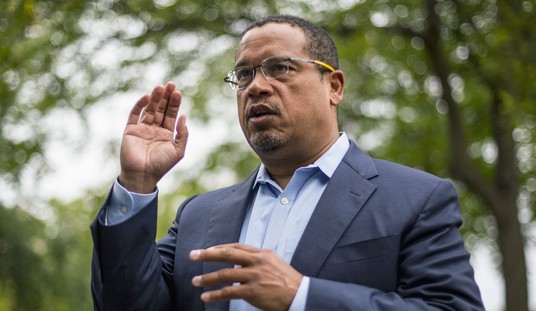Yeah, I don’t know. There are strong arguments for holding your fire — confusion, crossfire, chaos when the cops show up. Imagine you’re in a public place, though, and you conveniently happen to be near a side exit when suddenly you hear gunshots. You’re carrying. Everyone hits the deck. You could sneak out the side exit and abandon the victims inside to their fates, or you could take a peek to see if you can spot the shooter. If you see him and he’s not looking your way, do you run or do you take a shot? That’s not a “last resort” situation since you can escape without firing. But if you run, how do you live with the guilt later that some of the people murdered might have been saved if you’d engaged him? Survivor’s guilt is difficult even for those who aren’t armed and had no choice but to try to save themselves. As a Twitter pal said, what’s the point of concealed carry if you’re not supposed to try to stop a mass murderer?
As I say, though, there are good counterarguments.
Blair’s book warns against people with concealed handguns trying to engage a killer except as a last resort:
“The last thing you want to do in an active shooter event is to pull your gun out and go hunting for the shooter. If there are other concealed gun carriers in the attack location, they may shoot you. If the police show up and you are running around with a gun, they will probably shoot you. Remember that no one knows who you are. The responders are looking for someone with a gun and you match that description.”
It takes cops just three minutes on average to respond to a mass shooting, WaPo notes (when seconds count, the police are only minutes away!), a fact which would have more punch if Orlando PD hadn’t spent three hours trying to negotiate with Mateen after they got there. But the basic point is fair enough — creeping around with your gun drawn while SWAT is peering through the windows to see if they can spot a shooter isn’t too bright. If you can muster the nerve to engage a homicidal degenerate who has you outgunned, you’ll also have to muster the presence of mind to keep your weapon concealed until the decisive moment to shoot has arrived. If not, you might end up getting jumped by another would-be hero inside the club when your back is turned because he thinks you’re an accomplice to the gunman.
Read the whole piece, though, as there’s other advice in there that’s interesting and counterintuitive. You’re better off with a side exit if you have to run than the main exit even though the main exit might be larger because more people will rush for it and that might create a bottleneck. One investigator remembers a fire in a club in which 25 bodies were found around the main doors. One of your best plays is to find a room and simply lock the door; despite mass shooters being armed to the teeth, the experts who spoke to WaPo couldn’t think of a single case where a locked door had been breached. A less effective strategy, surprisingly, was playing dead, which you would think would work in a scene littered with bodies and a shooter who’s preoccupied with finding new victims. The problem, experts say, is that these lunatics frequently keep firing even at people who are already down. They’re there to create a body count. They’ll take the time if they can spare it to make sure it really is a body on the ground and not a victim who’s wounded but keeping quiet.








Join the conversation as a VIP Member